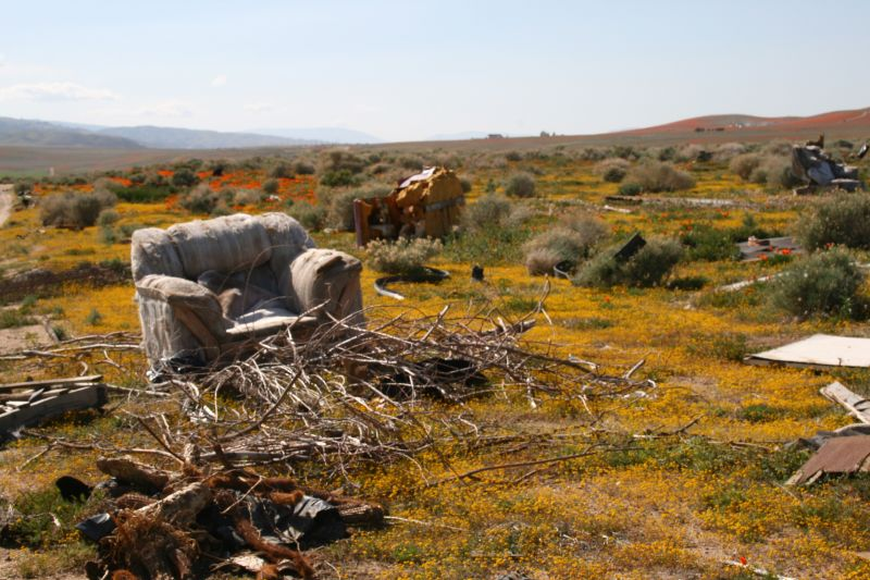(Photograph = desert trash, Renee Silverman)
Introduction
Litter and trash are harmful to cacti and succulents. Trash can be discarded in an instant, but the damage it does may take hundreds of years to repair in slow-moving deserts.
The Details
Soil pollution from man-made causes is sometimes easy to see: industrial waste, asphalt, and even rotting buildings all leave obvious and sometimes instant effects. But limited amounts of materials on the desert surface (papers, metal cans, old washing machines, etc.) can also cause real problems for cacti and succulents, problems that can detrimentally affect growth and reproduction.
Trash can disturb germination by shading seeds or smothering seedlings. The slow erosion of small amounts of metals and plastics can release man-made chemicals for hundreds of years in the slow time of a desert. Too much zinc, iron, or other metals is unhealthy for many plants, and metal from corroding soda pop cans has the potential to compromise cactus and succulent growth.
Beneficial fungi (mycorrhizae) and plant growth-promoting bacteria positively affect the growth and health of cacti and succulents. We don’t really know what effects plastics have on “good” or “bad” soil microbes of deserts. Hydrocarbon byproducts will be regularly replenished in the soil as plastics degrade, but we don’t know what effects they might have over many years.
As it tumbles in the wind, trash can wound plants and damage flowers, reducing seed production. Plastic bags reduce photosynthesis as they shade cacti and succulents, or the bags can even create instant ovens if they cover plants. Because it holds fast to thorny cacti and succulents, trash collects and acts as fuel in fires.
Cacti and succulents are affected by debris, but shrubs of all types that dot the American deserts are affected too. These slow-growing plants can be hundreds of years old. They act as trash magnets with spiny branches collecting hamburger wrappers and newspapers. These plants, too, suffer injury from trash.
Related Reading: Beneficial Soil Fungi and Pollution









Hello Joe,
In 1994 Dave Ferguson and I travelled through Mexico, from El Paso down under Mexico City and along the coast back to Phoenix. I remember very well that coming closer to a town was marked everywhere by the plastic bags hanging in bushes, 5 km from town it started, becoming denser and denser closer to town. Even a cardboard box laying in a dry area takes many years to decompose. I also remember piles of building trash between Ariocarpus (or on the Ario’s). Perhaps in time people will start cleaning these places but first people need to start realizing what valuable and vulnerable nature they have.
Of course the good memories are much more plentyfull!
Greetings, Robert in The Netherlands
Yes, you tend to expect this around human habitation. But in Peru, where chicken farms are freely dotted around the desert, it can take hours to pick the feathers out of cacti and terrestrial Tillandsia before they are fit to have their picture taken!
They call it ‘progress’ and ‘civilization’ – go back a few pages and have another go!
Cheers
PK
Very true–trash in the desert lasts for a long, long time because it is so dry. At least chicken feathers will eventually decay–plastic takes a lot longer. :(